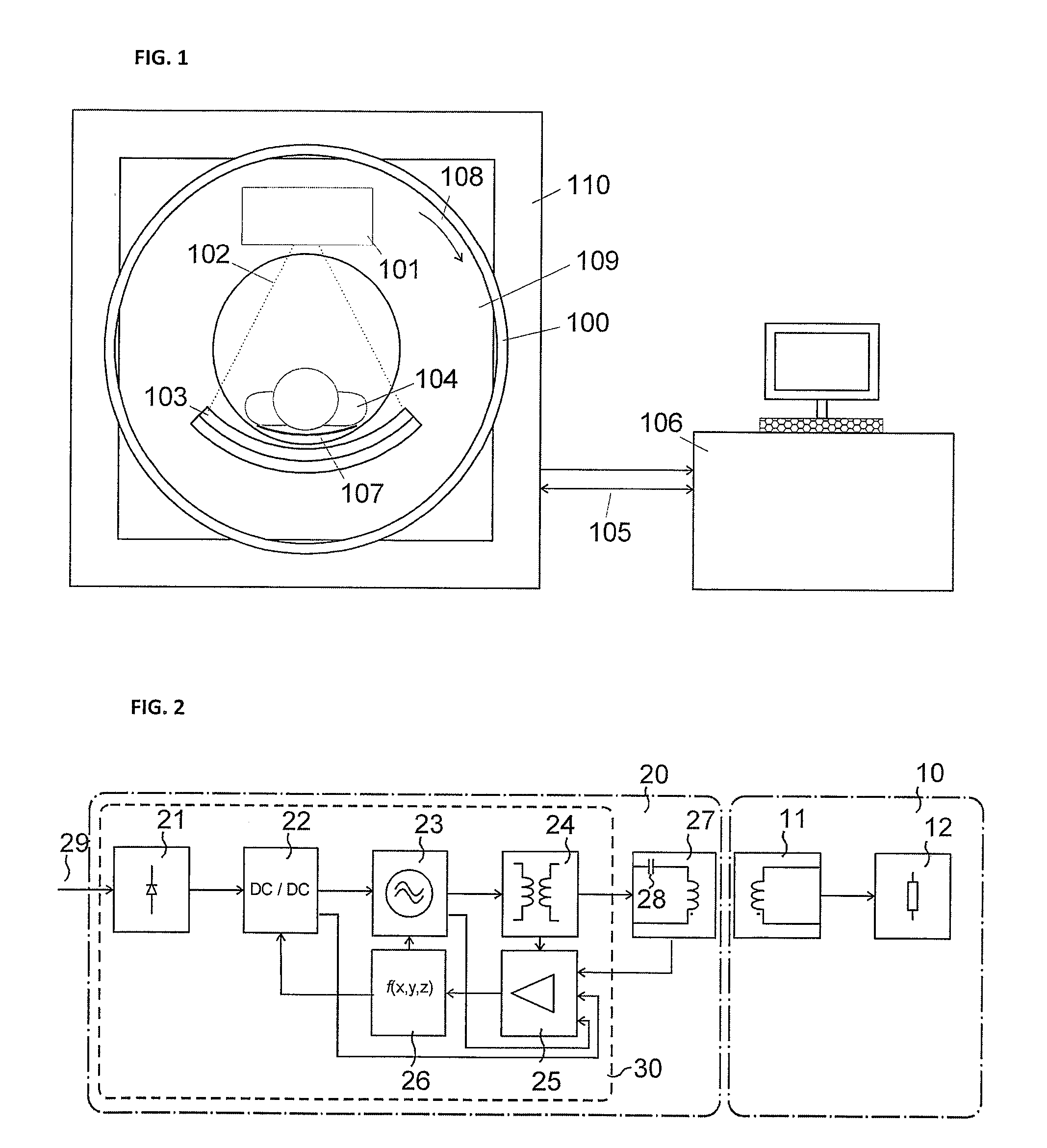Controlled contactless power transmission
a power transmission system and control technology, applied in the direction of dc-ac conversion without reversal, instruments, nuclear engineering, etc., can solve the problems of series reaction between input and load, significant change in load voltage, and stronger change of load voltage, so as to increase the control capability of output power and reduce switching losses
- Summary
- Abstract
- Description
- Claims
- Application Information
AI Technical Summary
Benefits of technology
Problems solved by technology
Method used
Image
Examples
Embodiment Construction
[0028]In a preferred embodiment output voltage and output current of the DC / DC converter 22 are measured to estimate voltage and current at the load 12. As an alternative input voltage and / or current thereof are measured. Specifically the output values of the DC / DC converter 22 are easy to measure as the output is a DC voltage and a corresponding DC current. By using these measured values new set point values for the DC / DC converter are calculated by the function generator 26.
[0029]In a further embodiment the matching transformer has a shield between primary and secondary windings. This further helps to reduce suppression of common mode currents. This shield may be a foil or a winding.
[0030]A further embodiment relates to the DC / DC converter 22. It preferably includes a cascaded control circuit, including a first high-speed current control loop and a second low speed voltage control loop defining the set point for the first control loop.
[0031]In another embodiment the DC / DC converte...
PUM
 Login to View More
Login to View More Abstract
Description
Claims
Application Information
 Login to View More
Login to View More - R&D
- Intellectual Property
- Life Sciences
- Materials
- Tech Scout
- Unparalleled Data Quality
- Higher Quality Content
- 60% Fewer Hallucinations
Browse by: Latest US Patents, China's latest patents, Technical Efficacy Thesaurus, Application Domain, Technology Topic, Popular Technical Reports.
© 2025 PatSnap. All rights reserved.Legal|Privacy policy|Modern Slavery Act Transparency Statement|Sitemap|About US| Contact US: help@patsnap.com



